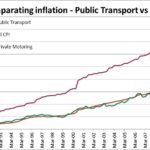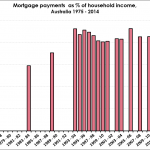Is a breast worth 15 lungs

Lung cancer is by far the biggest killing cancer in Australia. In 2014 it claimed the life of over 8,200 people. That’s almost as many as the next three cancers combined (prostate 3 102 + breast 2 844 + pancreas 2 547 = 8 493).

In popstats format, that’s one Australian death every hour.
Fortunately, much like pop, lung cancer’s mortality rate peaked in the early 80s, and has been declining steadily since.
Women catching up on the wrong race
This decrease, however, has been entirely gender lopsided.
While the anti-smoking initiatives have helped halve the mortality rate of men’s lung cancer since 1981, women’s has increased by 60% in the same period.

The increase in women dying of lung cancer has been so drastic that it has overtaken breast cancer as the biggest killer of women among all cancers. Back in the 1970s, breast cancer killed 4 times as many women as lung cancer.

Yet, lung cancer seems to be largely ignored (relatively speaking).
Research conducted by Cancer Australia, shows that even though lung cancer kills about 3 times as many as breast cancer, it receives less than a fifth of the research funding. Similar comparisons can be made with prostate and other cancers. The graph below from their 2016 Cancer Research Review[1] provides a great representation of the inequality of research funding distribution currently in the field.

Lungs don’t sell
The communities’ disdain for lung cancer is also clear in the organizations we support. The Australian Charity and Not-for-profit Commission’s register includes 18 organisations mentioning “Breast cancer” by name, and another 15 mentioning “prostate cancer”. Yet not one combined the words “lung” and “cancer” in their name[2].
This is not to say that there aren’t any organisations working in the area, but rather suggests that highlighting their cause is not considered a draw card.
Who’s to blame
Many suggest the community ignores lung cancer sufferers because a many of them are somewhat responsible for their condition. After all, smoking is linked with about 80%-90% of lung cancer sufferers[3]. But since when have we been so spiteful?
We help countless who have had a hand in their demise.
When the injured arrive at Emergency, triage forms don’t cover culpability.
We help those who drove too fast for the unexpected just as much as careful drivers who became their victims.
We help young men who go clubbing in Sydney, even if they threw the first punch.
People take all sorts of risks. Yet help is at hand when things don’t work out the way they hoped.
If James Dean does it

Not to mention that around 4 out of 5 sufferers took up smoking before the Vietnam War[4]; smoking warnings were not even a thing[5], and ads were the epitome of cool.
Not to mention the other 15%
That’s all without even thinking of the roughly 1,500 sufferers who never touched a smoke!
Heal the world
This, by the way, is a global phenomena. Lung cancer killed 1.6 million people worldwide in 2014 [7], yet similar under funding occurs across the major economies (or at least the ones I could find on a quick google search). So, any impact local research has in Australia could potentially help millions across the world.
So, why not?
Why not indeed.
In this age of cost-benefit analysis, we sometimes forget to put it into practice where it matters most. Lung cancer might be decreasing, but it sure isn’t going away. Smoking rates may have decreased, but they still haunt half as many as they did in the 80s[6]. At this rate, lunch cancer will still be the biggest killer for generations to come.
It’s time to stop victim blaming smokers, and put some money where are lungs are.
Disclosure:
The author is a reformed smoker… the worst kind.
Feature pic by hey_paul:
References:
[1] https://canceraustralia.gov.au/system/tdf/publications/cancer-research-australia-2016-2018-opportunities-strategic-research-investment-summary/pdf/2016_research_review_highlights_final.pdf?file=1&type=node&id=4442
[2] Based on their 2014 data.
[3] http://www.cdc.gov/cancer/lung/basic_info/risk_factors.htm
[4] Based on their age – over 65s in 2013. And research showing 90% of smokers pick up the habit before the age of 20 (United States Department of Health and Human Services. Substance Abuse and Mental Health Services Administration. Center for Behavioral Health Statistics and Quality. National Survey on Drug Use and Health, 2014. ICPSR36361-v1. Ann Arbor, MI: Inter-university Consortium for Political and Social Research [distributor], 2016-03-22. http://doi.org/10.3886/ICPSR36361.v1.)
[5] http://www.tobaccoinaustralia.org.au/a12-1-1-history-health-warnings
[6] http://www.quit.org.au/resource-centre/facts-evidence/fact-sheets/smoking-rates
[7] http://www.who.int/mediacentre/factsheets/fs297/en/

















